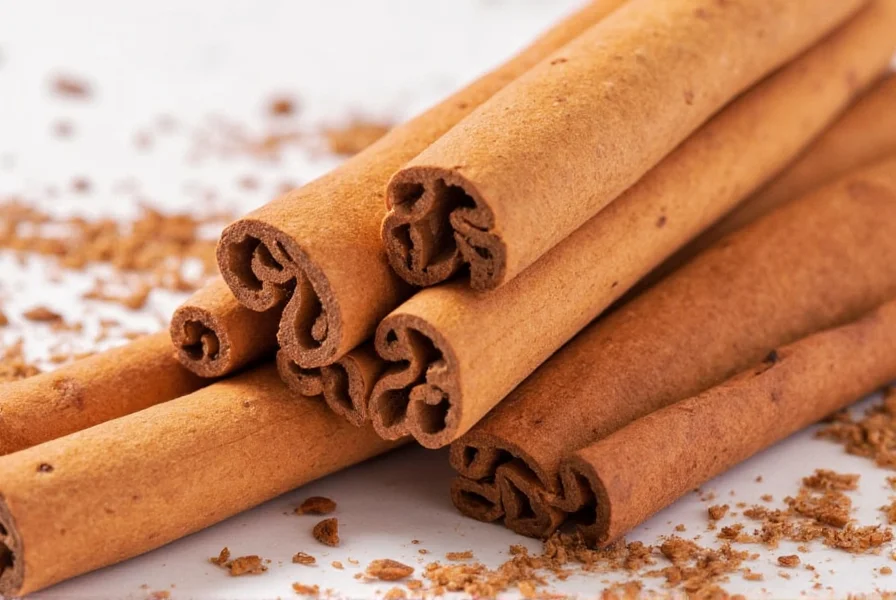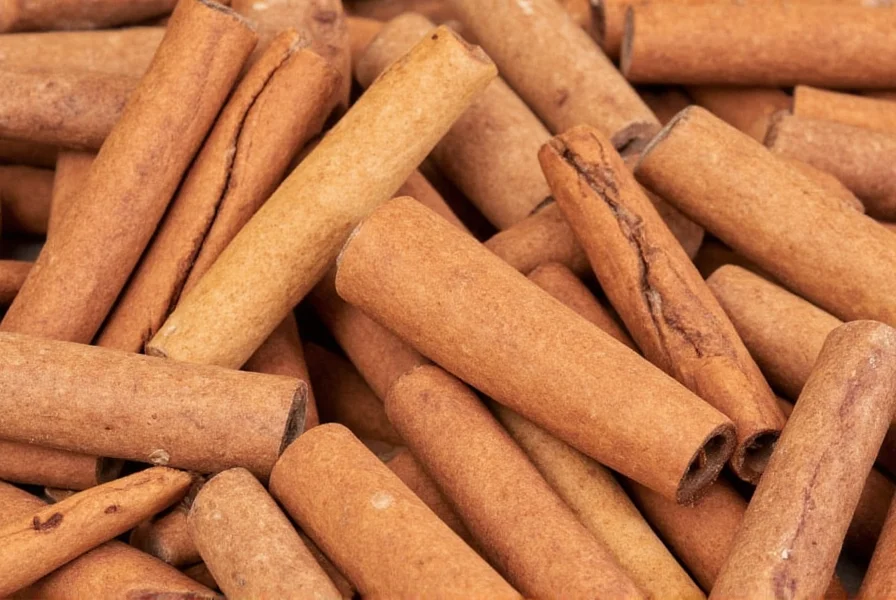Understanding how cinnamon works requires examining its complex biochemical properties. This ancient spice contains over 80 identified compounds, with cinnamaldehyde accounting for 60-90% of its essential oil content. When consumed, these compounds interact with multiple physiological pathways, creating the health effects people have valued for centuries across various cultures.
The Science Behind Cinnamon's Active Compounds
Cinnamon's effectiveness stems from its unique chemical composition. The bark of Cinnamomum trees contains several bioactive components that work synergistically. Cinnamaldehyde gives cinnamon its distinctive flavor and aroma while providing most therapeutic benefits. Other important compounds include eugenol, linalool, and coumarin, though coumarin content varies significantly between cinnamon types.
| Compound | Concentration | Primary Function |
|---|---|---|
| Cinnamaldehyde | 60-90% | Insulin sensitivity enhancement, anti-inflammatory effects |
| Eugenol | 5-10% | Antimicrobial properties, pain relief |
| Linalool | 1-5% | Stress reduction, antioxidant activity |
| Coumarin | Variable | Natural blood thinner (higher in Cassia) |
How Cinnamon Works for Blood Sugar Regulation
One of cinnamon's most researched mechanisms involves blood glucose management. Multiple clinical studies demonstrate that cinnamon works by mimicking insulin and enhancing insulin receptor activity. When you consume cinnamon, cinnamaldehyde activates peroxisome proliferator-activated receptors (PPARs) in muscle and fat cells, improving glucose uptake without requiring additional insulin.
Additionally, cinnamon works by slowing gastric emptying and inhibiting enzymes that break down carbohydrates in the digestive tract. Specifically, it reduces the activity of alpha-glucosidase and sucrase, enzymes responsible for converting complex sugars into glucose. This dual action—improving insulin sensitivity while slowing sugar absorption—explains why regular cinnamon consumption correlates with improved fasting blood glucose levels in numerous human trials.
Cinnamon's Antioxidant and Anti-inflammatory Mechanisms
Cinnamon ranks among the most antioxidant-rich spices, with an ORAC value (Oxygen Radical Absorbance Capacity) of approximately 267,536 μmol TE/100g. Its antioxidant compounds neutralize free radicals through several pathways:
- Direct scavenging of reactive oxygen species (ROS)
- Upregulation of the body's natural antioxidant enzymes like superoxide dismutase
- Chelation of pro-oxidant metal ions like iron and copper
The anti-inflammatory effects work through inhibition of nuclear factor-kappa B (NF-κB), a protein complex that controls DNA transcription and cytokine production. By suppressing NF-κB activation, cinnamon reduces the production of inflammatory markers like TNF-α and IL-6, which contributes to its potential benefits for conditions involving chronic inflammation.

How Cinnamon Works in Culinary Applications
Beyond health benefits, cinnamon works through specific flavor chemistry principles. When heated, cinnamaldehyde undergoes partial conversion to cinnamic acid, creating more complex flavor notes. In baking, cinnamon interacts with sugars through Maillard reactions, producing additional aromatic compounds that enhance overall flavor profiles.
The spice's effectiveness in food preservation stems from its antimicrobial properties. Cinnamaldehyde disrupts bacterial cell membranes and inhibits quorum sensing—the communication system bacteria use to coordinate infection. This explains cinnamon's historical use as a natural food preservative long before modern refrigeration.
Practical Considerations for Using Cinnamon
Understanding how cinnamon works helps optimize its usage. For blood sugar benefits, studies typically use 1-6 grams daily (about 1/2 to 2 teaspoons), with effects becoming noticeable after 2-4 weeks of consistent use. Ceylon cinnamon (Cinnamomum verum) contains significantly less coumarin than Cassia cinnamon, making it safer for regular consumption.
Timing matters when using cinnamon for metabolic health. Consuming it with carbohydrate-rich meals maximizes its enzyme-inhibiting effects on digestion. For best results, mix cinnamon into foods rather than taking it as a supplement, as food matrices enhance the bioavailability of its active compounds.

Limitations and Research Gaps
While research on how cinnamon works is promising, several limitations exist. Most human studies have small sample sizes and short durations. The optimal dosage remains unclear, and individual responses vary significantly based on genetics and baseline health status. Additionally, the mechanisms behind cinnamon's cognitive benefits require further investigation, though preliminary research suggests it may inhibit tau protein aggregation associated with Alzheimer's disease.
Frequently Asked Questions
How quickly does cinnamon work for blood sugar control?
Research shows measurable effects on fasting blood glucose typically appear after 2-4 weeks of consistent daily consumption (1-6 grams). Some studies note acute effects on post-meal glucose spikes when consumed with carbohydrate-rich meals, with reduced blood sugar elevation observed within 1-2 hours of consumption.
What's the difference between how Ceylon and Cassia cinnamon work?
Both types work through similar mechanisms involving cinnamaldehyde, but Ceylon cinnamon contains significantly less coumarin (0.004-0.1%) compared to Cassia (2.1-6.97%). This makes Ceylon safer for regular, long-term use. Cassia may provide stronger immediate effects due to higher cinnamaldehyde concentration, but the high coumarin content limits its safe daily dosage.
How does cinnamon work to reduce inflammation?
Cinnamon works by inhibiting the NF-κB pathway, which regulates inflammation in the body. Its compounds, particularly cinnamaldehyde, block the activation of this protein complex, reducing the production of inflammatory cytokines like TNF-α and IL-6. This mechanism explains cinnamon's potential benefits for conditions involving chronic inflammation, such as arthritis and metabolic syndrome.
Can cinnamon work as effectively in tea as in food?
Yes, cinnamon works effectively in tea, though the extraction process differs from food applications. Hot water extracts water-soluble compounds like polyphenols, while fat-containing foods better extract lipid-soluble compounds like cinnamaldehyde. For maximum benefit, add a small amount of healthy fat (like coconut oil) to cinnamon tea to enhance absorption of its fat-soluble active compounds.











 浙公网安备
33010002000092号
浙公网安备
33010002000092号 浙B2-20120091-4
浙B2-20120091-4